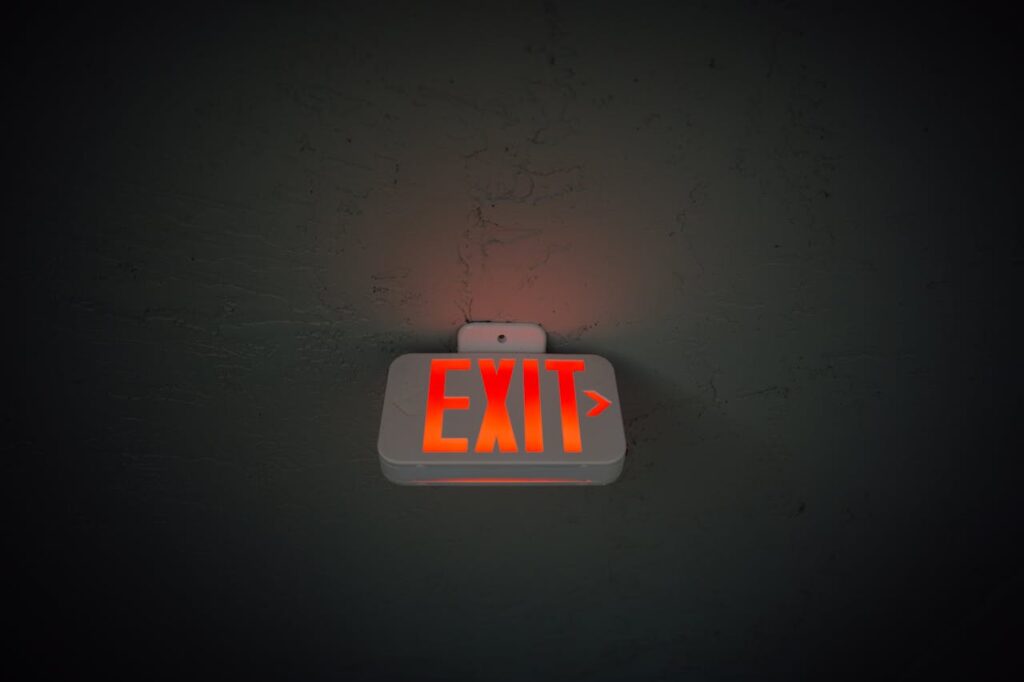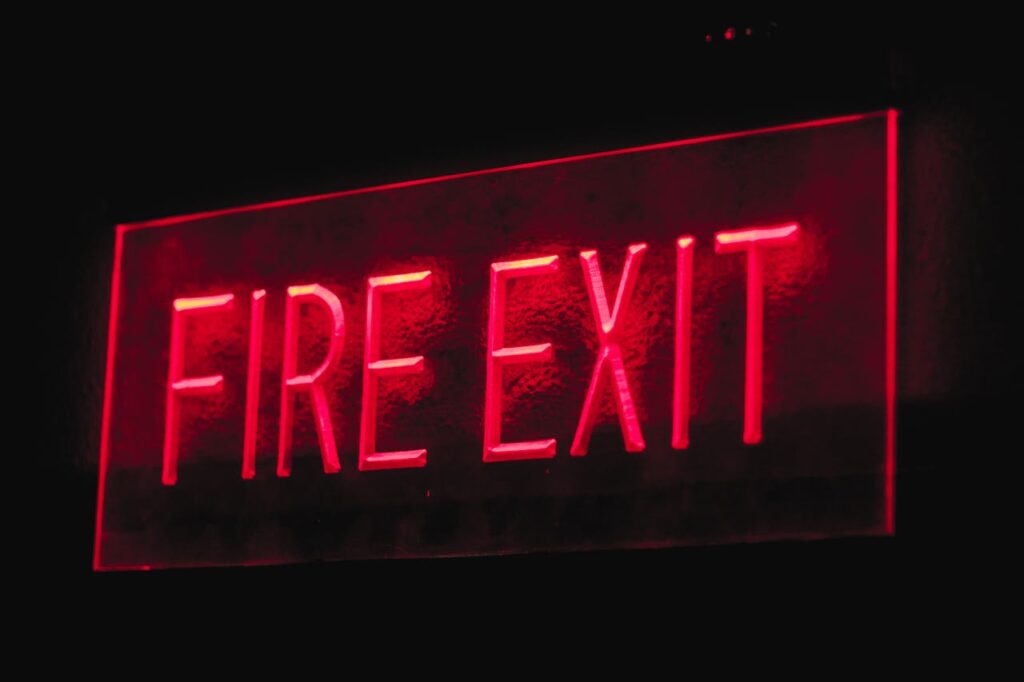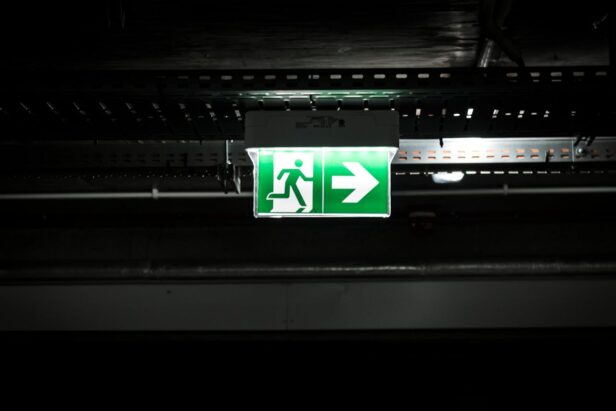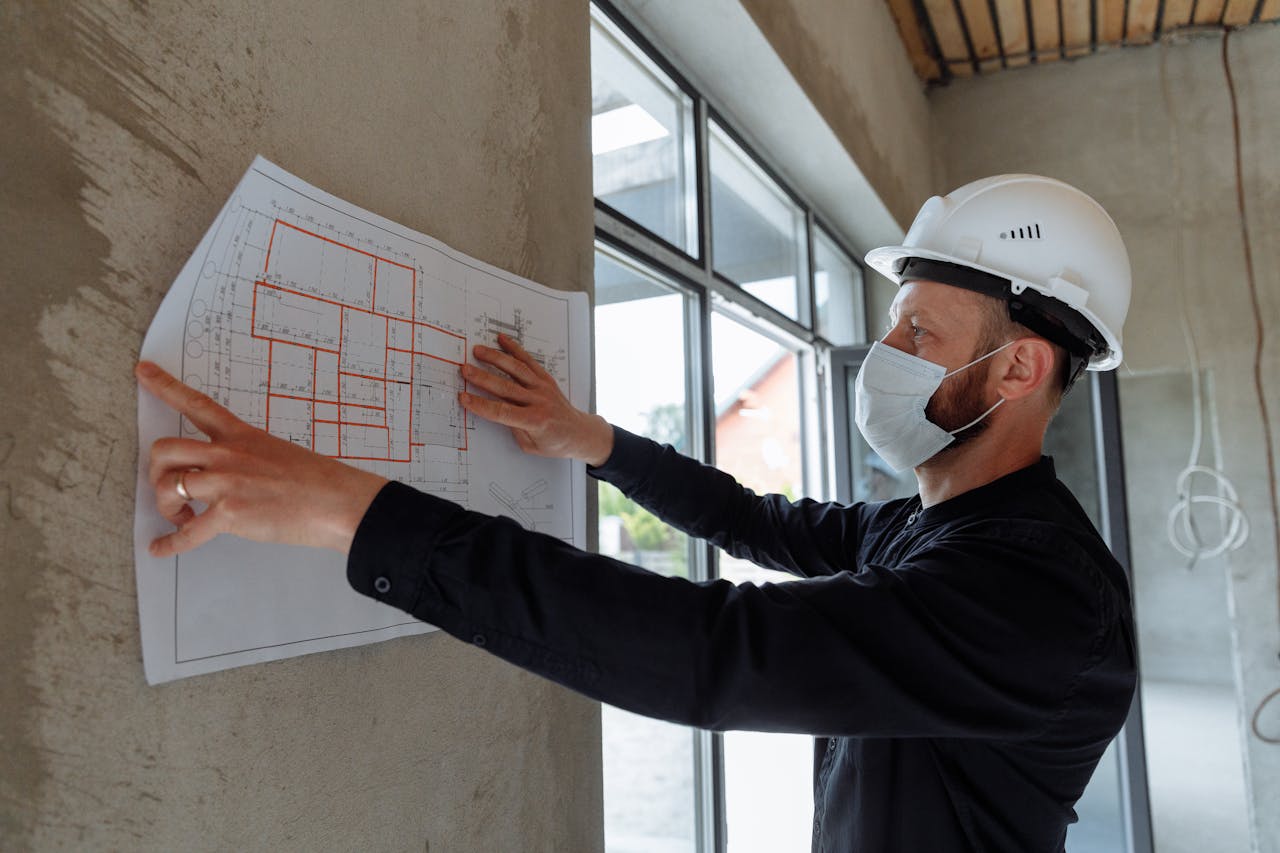When the lights go out during an emergency, buildings transform into dangerous mazes. The emergency lighting building code prevents this chaos by establishing mandatory requirements that ensure safe evacuation during power failures or fires.
This regulatory framework draws primarily from NFPA 101 (Life Safety Code), supported by the International Building Code, OSHA standards, and product specifications like UL 924. These standards define where emergency illumination must be installed, brightness levels for means of egress, required runtime durations, exit sign specifications, and testing protocols that keep systems operational when lives depend on them.
Where Is Emergency Lighting Required In Buildings?

Emergency lighting requirements cast a wide net across occupied buildings. NFPA 101 mandates coverage for virtually all occupied structures, focusing on the complete means of egress system that guides occupants to safety.
The code covers all exit access components including stairs, aisles, corridors, ramps, escalators, and passageways that lead to designated exits. Exit discharge areas also require emergency lighting, encompassing stairs, ramps, aisles, walkways, and escalators that connect exits to public ways or safe areas.
Specialized Building Applications
Beyond standard egress paths, emergency lighting extends to challenging environments. Underground structures and limited-access buildings fall under the requirements due to their restricted natural lighting and complex exit routes. High-rise buildings face additional scrutiny given the extended evacuation times and reliance on protected stairwells.
Buildings with delayed-egress doors must provide emergency lighting at these controlled access points. Smokeproof enclosures, designed to prevent smoke infiltration during fires, also require dedicated emergency illumination to ensure occupants can navigate these critical safety features.
IBC Section 1008 Additional Requirements
The International Building Code expands coverage beyond egress paths to include essential operational areas. Electrical equipment rooms require emergency lighting to enable facility personnel to manage building systems during emergencies. Fire command centers, where incident coordination occurs, must maintain illumination for emergency response operations.
Large public restrooms exceeding 300 square feet also fall under IBC requirements. This provision acknowledges that occupants unfamiliar with building layouts may become disoriented in sizable restroom facilities during power outages.
Three Limited Exemptions
Despite the broad coverage, three specific exemptions exist under NFPA 101. Spaces not routinely occupied by people receive exemption, recognizing that emergency lighting serves occupied areas where human safety is at risk.
Towers designed for fewer than three occupants at one time, such as observation towers or signal stations, may be exempt if they provide escape ladders as alternative egress methods. The final exemption applies to daylight-only occupancies where natural light can adequately illuminate all required egress paths throughout operating hours.
This daylight exemption requires approval from the authority having jurisdiction (AHJ). We recommend confirming these exemptions with your local fire marshal or building official before finalizing any emergency lighting design, as local amendments may impose stricter requirements than the base codes.
What Illumination, Signage, And Product Standards Apply?
Emergency lighting systems must meet specific performance standards that divide into three distinct areas: continuous egress lighting, emergency operation requirements, and exit sign specifications. Each category carries precise numerical requirements that we verify during construction and commissioning.
Egress Lighting Requirements
NFPA 101 Section 7.8 establishes continuous illumination standards for normal building operations. Stairways require 10 foot-candles at walking surfaces, while general floors and walking areas need 1 foot-candle minimum. Assembly occupancies can operate with 0.2 foot-candles in exit access areas during normal conditions.
The code includes a critical redundancy provision. If any single lighting fixture fails, the remaining system must maintain at least 0.2 foot-candles average illumination across the affected area. We design our electrical systems with overlapping coverage zones to ensure this requirement remains achievable throughout the building’s operational life.
Emergency Lighting Performance Standards
NFPA 101 Section 7.9 governs emergency lighting activation and duration. Systems must start automatically within 10 seconds of primary power failure and operate for at least 90 minutes without manual intervention. The initial emergency illumination averages 1 foot-candle with no point dropping below 0.1 foot-candle along egress paths.
After 90 minutes of continuous operation, the system may decline to 0.6 foot-candles average with 0.06 foot-candles minimum at any point. The maximum-to-minimum illumination ratio cannot exceed 40:1 throughout the emergency period, preventing dangerous contrast variations that impair occupant vision during evacuations.
Exit Sign Specifications
Exit signs under NFPA 101 Section 7.10 must display “EXIT” lettering and remain continuously illuminated during normal and emergency conditions. The signs must be visible from all directions of approach along egress routes. Externally illuminated signs require 5 foot-candles on the sign face with letters measuring at least 6 inches high and 3/4-inch stroke width.
Directional indicators like chevrons must point toward the exit route and comply with specific placement requirements. Floor-proximity exit signs mount between 6 and 18 inches above the floor level. Internally illuminated proximity markings must carry UL 1994 listings to ensure consistent performance during emergencies.
Product Certification Standards
UL 924 certification covers emergency lighting equipment and exit signs. Listed products must demonstrate 90-minute operation capability, remain visible from 100 feet distance, meet minimum luminance requirements, and use flame-retardant construction materials. Internally illuminated signs require ANSI/UL 924 compliance for electrical safety and performance consistency.
OSHA standards reinforce these requirements through Section 1910.37. Exit route letters must measure at least 6 inches high with 3/4-inch strokes. Exit routes require adequate lighting with minimum 0.1 foot-candles along the path so employees with normal vision can distinguish the route during emergencies. These overlapping standards create comprehensive coverage that protects building occupants while satisfying multiple regulatory authorities.
How Should Systems Be Powered, Tested, And Documented?

Power Options And Transfer Requirements
We design emergency lighting systems with three primary power configurations. On-site generators with automatic transfer switches provide central emergency power to selected building circuits. Centralized battery systems offer another solution, connecting multiple lighting zones to shared battery banks located in electrical rooms. Individual battery backups built into fixtures and exit signs create the most distributed approach, with each unit containing its own power source.
Emergency power supply systems (EPSS) must activate within 10 seconds of normal power failure, regardless of configuration. This strict transfer time applies to all emergency lighting loads throughout the building. We coordinate with electrical engineers to verify that automatic transfer switches and control circuits meet this requirement during system commissioning.
Code Compliance For Emergency Power Systems
New EPSS installations follow NFPA 110 requirements as Type 10, Class 1.5, Level 1 systems. Type 10 designates the 10-second maximum transfer time. Class 1.5 requires operation for 1.5 hours without refueling or recharging. Level 1 classification applies to systems where failure could result in loss of life or serious injury.
Stored energy systems, primarily battery-based configurations, must comply with NFPA 111 standards. Battery installations also reference NFPA 70 (National Electrical Code) for proper electrical connections, grounding, and ventilation requirements. We coordinate these multiple code requirements during design development to ensure complete compliance.
System Design For Resilience
Code requires emergency lighting systems to maintain illumination even when individual components fail. We arrange fixtures so that losing any single lighting unit does not create areas of total darkness along egress paths. This typically involves overlapping coverage patterns and strategic fixture placement at corridor intersections and stairwell landings.
Backup generators serving emergency lighting must include redundancy for critical components. Transfer switch maintenance bypasses, dual fuel supplies, and automatic engine exercising systems help ensure reliable operation when needed. We evaluate each project for appropriate resilience measures based on building occupancy and AHJ requirements.
Testing Protocols And Documentation
Monthly functional testing verifies emergency lighting operation for at least 30 seconds every 30 days. Manual testing involves pressing test buttons on individual units to simulate power loss and confirm proper illumination. Self-testing units perform these checks automatically and display status indicators for visual confirmation during monthly inspections.
Annual 90-minute tests demonstrate full battery capacity and system endurance. We coordinate these extended tests during low-occupancy periods to minimize disruption. Computer-based self-testing systems generate automated reports and maintain digital testing records, reducing manual documentation requirements.
Written inspection and test records must remain available for AHJ review. Documentation includes test dates, technician identification, system performance observations, and any repairs or replacements completed. We recommend maintaining records for at least four years as required by most authorities having jurisdiction.
Conclusion And Next Steps

Achieving emergency lighting compliance requires a systematic approach that connects code requirements to practical execution. We begin with egress mapping to identify all required paths, then specify systems that meet NFPA 101 illumination levels and 90-minute duration standards. This foundation ensures occupant safety while establishing the framework for successful inspections.
The next phase involves selecting UL 924-listed equipment and designing emergency power systems per NFPA 110 and 111 guidelines. Exit signs must comply with NFPA 101 specifications, though local amendments like New York City’s stricter red color, size, and brightness requirements can add complexity. We establish monthly 30-second and annual 90-minute testing schedules, maintaining detailed records that demonstrate ongoing compliance to the authority having jurisdiction. Final coordination with your fire marshal or AHJ before finalizing construction drawings prevents costly revisions during the inspection process.
Contact EB3 Construction to ensure your emergency lighting systems meet all code requirements and pass inspections.




